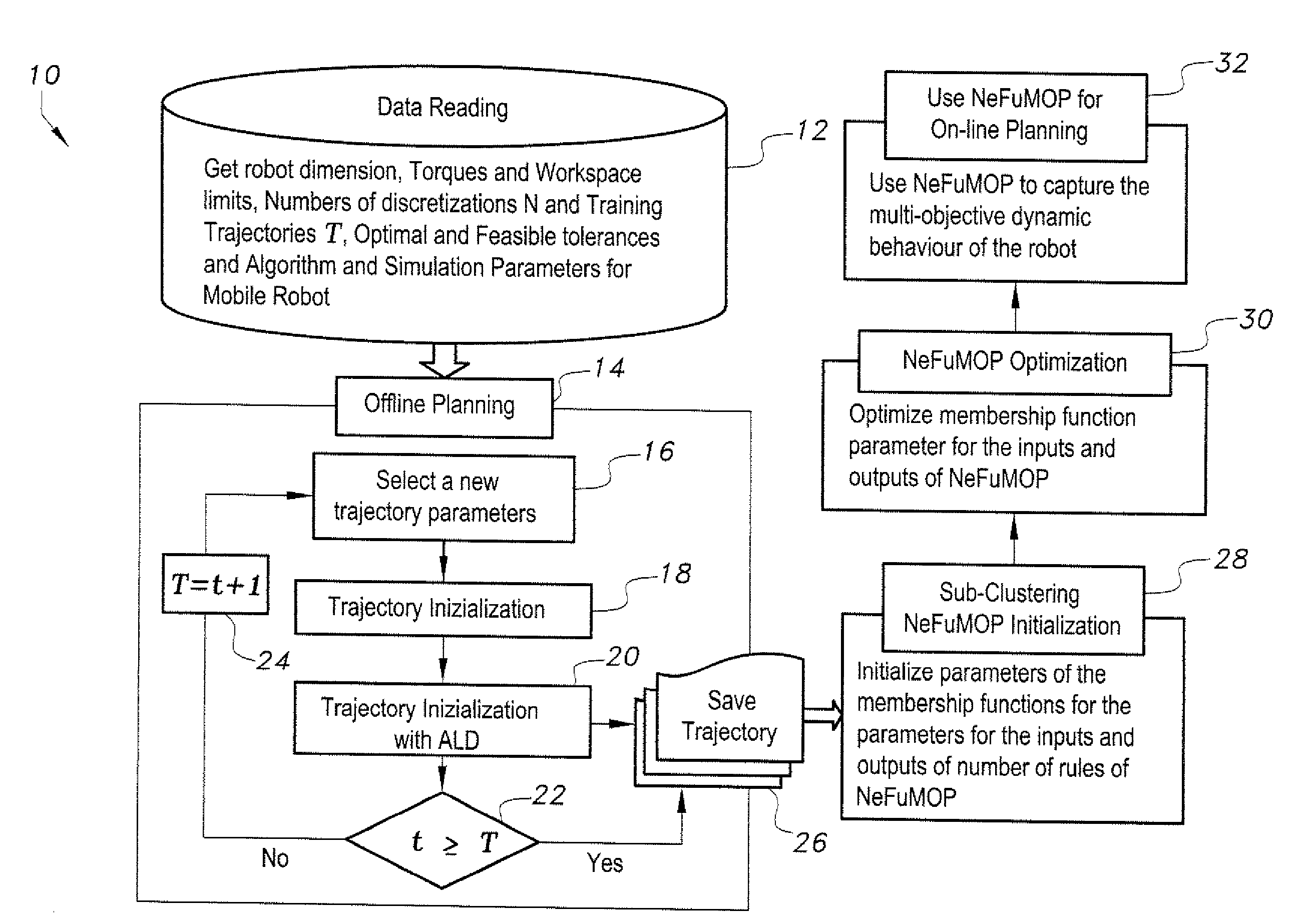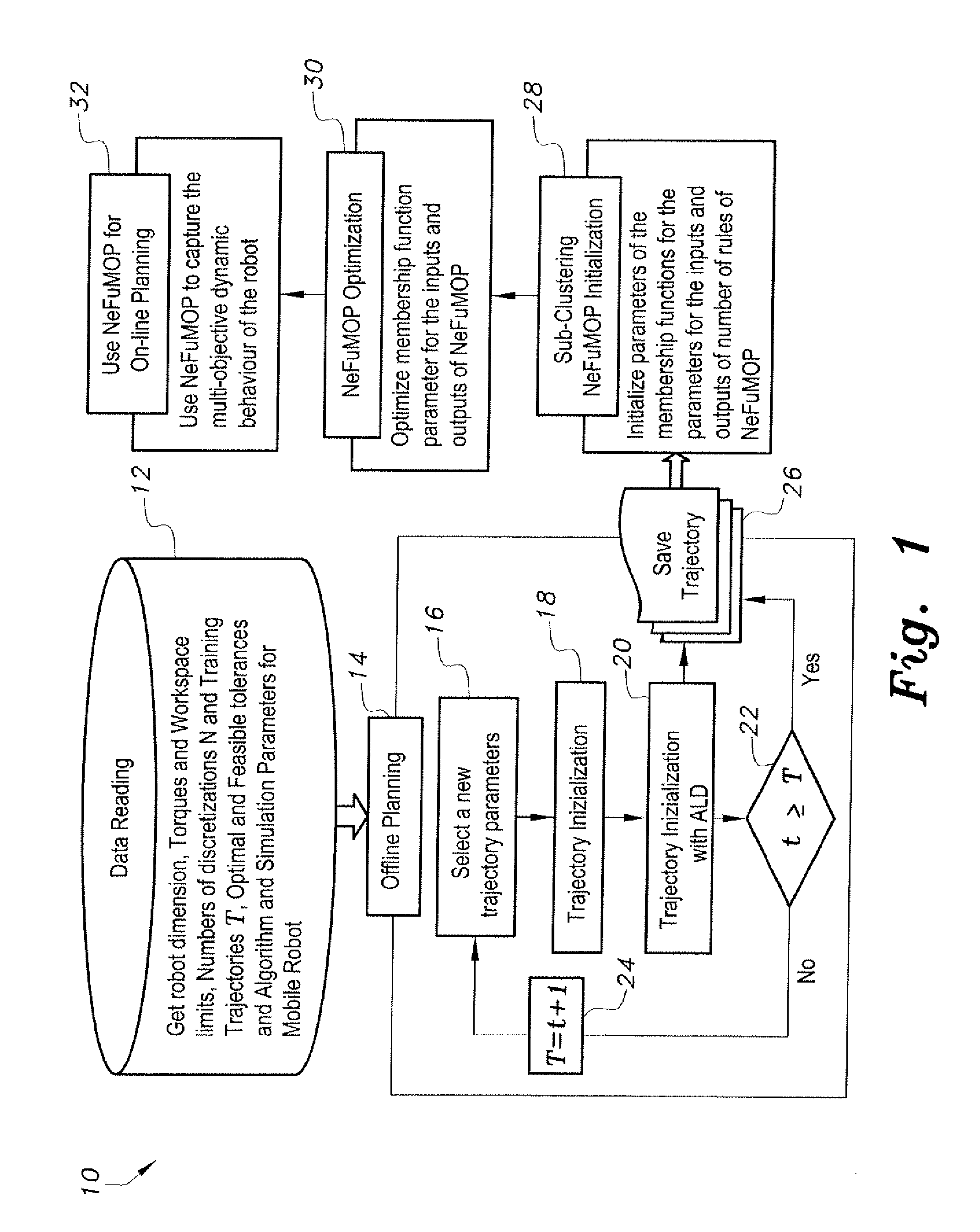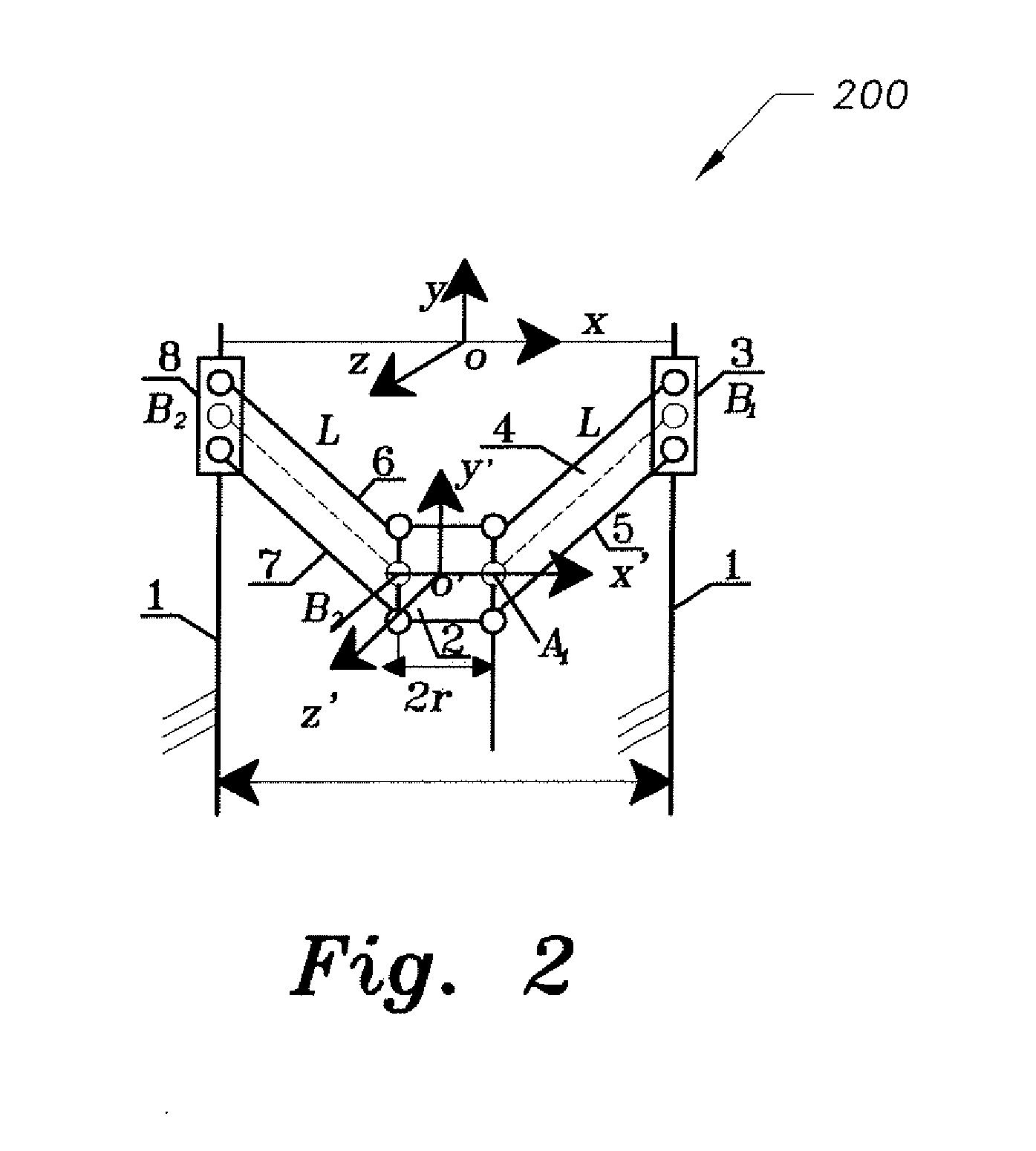Parallel kinematic machine trajectory planning method
a parallel kinematic machine and trajectory planning technology, applied in the field of robotic design and control, can solve the problems of high structural stiffness and rigidity, and the trajectory planning and control system design of pkms is more difficult than serial machines, and achieves the effect of minimizing time and energy
- Summary
- Abstract
- Description
- Claims
- Application Information
AI Technical Summary
Benefits of technology
Problems solved by technology
Method used
Image
Examples
Embodiment Construction
[0041]At the outset, it will be understood that the diagrams in the Figures depicting the parallel kinematic machine trajectory planning method are exemplary only, and may be embodied in a dedicated electronic device having a microprocessor, microcontroller, digital signal processor, application specific integrated circuit, field programmable gate array, any combination of the aforementioned devices, or other device that combines the functionality of the parallel kinematic machine trajectory planning method onto a single chip or multiple chips programmed to carry out the method steps described herein, or may be embodied in a general purpose computer having the appropriate peripherals attached thereto and software stored on non-transitory computer readable media, such as, for example, hard drives, programmable memory chips, floppy disks, USB drives, and the like, that can be loaded into main memory and executed by a processing unit to carry out the functionality and steps of the meth...
PUM
 Login to View More
Login to View More Abstract
Description
Claims
Application Information
 Login to View More
Login to View More - R&D
- Intellectual Property
- Life Sciences
- Materials
- Tech Scout
- Unparalleled Data Quality
- Higher Quality Content
- 60% Fewer Hallucinations
Browse by: Latest US Patents, China's latest patents, Technical Efficacy Thesaurus, Application Domain, Technology Topic, Popular Technical Reports.
© 2025 PatSnap. All rights reserved.Legal|Privacy policy|Modern Slavery Act Transparency Statement|Sitemap|About US| Contact US: help@patsnap.com



